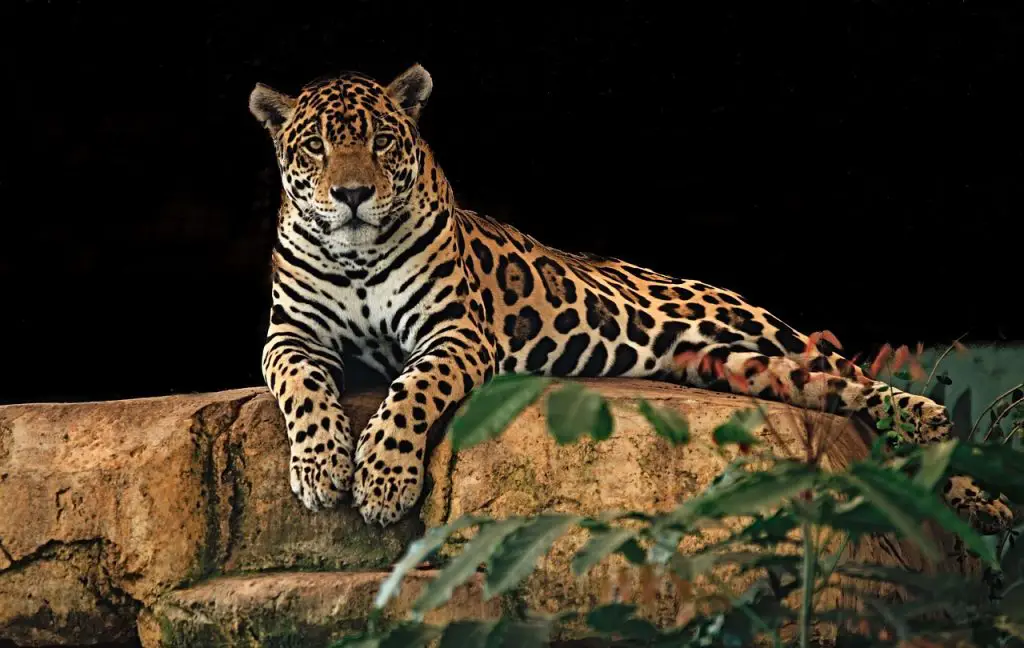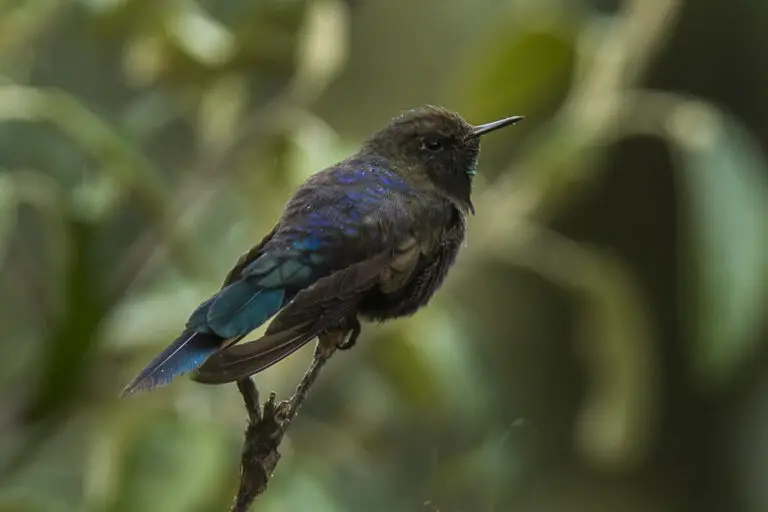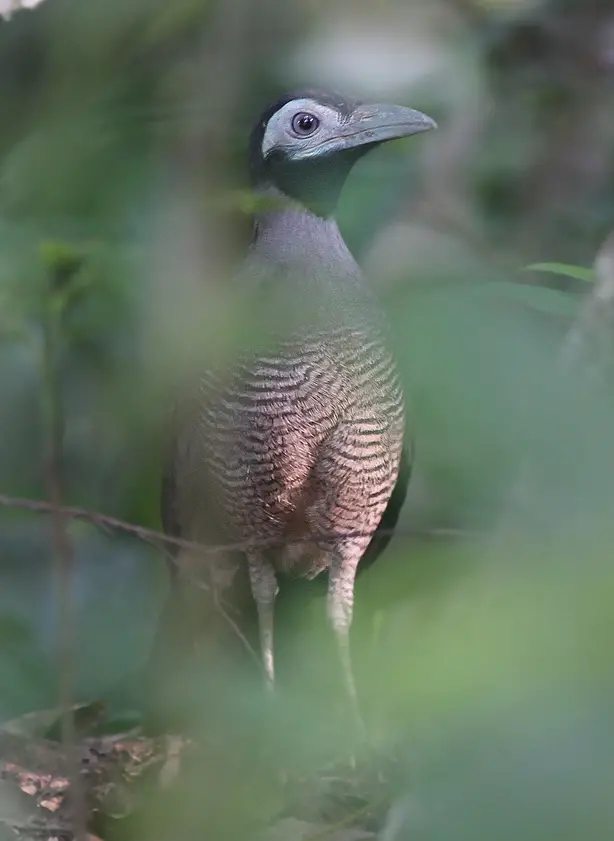Jaguar (Panthera onca)
“The largest feline on the American continent!”
The jaguar (Panthera onca) belongs to the following scientific classification:
- Kingdom: Animalia (animals)
- Phylum: Chordata (vertebrates)
- Class: Mammalia (mammals)
- Order: Carnivora (carnivores)
- Family: Felidae (cats)
- Genus: Panthera
- Species: Panthera onca
Conservation Status: Near Threatened
Locations:
- Central America
- North America (historically, in parts of the southwestern United States)
- South America
Jaguars are primarily found in dense forests and jungle habitats across their range in the Americas.
Common Name: Jaguar
Scientific Name: Panthera onca
Number of Species: 1
Physical Characteristics:
- Color: Jaguars can have a range of colors including brown, yellow, black, white, and tan.
- Skin Type: Covered in fur.
- Top Speed: Up to 50 mph.
- Lifespan: 12 – 15 years.
- Weight: 36 kg – 160 kg (79 lbs – 350 lbs).
- Length: 1.1 m – 1.9 m (43 in – 75 in).
- Age of Sexual Maturity: 3 – 4 years.
- Age of Weaning: 3 months.
Habitat: Jaguars inhabit rainforests, swamps, and floodplains primarily in Central and South America.
Diet: Carnivorous, feeding on prey such as deer, capybara, and tapir.
Group Behavior: Solitary.
Lifestyle: Crepuscular, meaning they are most active during dawn and dusk.
Prey: Their diet includes deer, capybara, and tapir.
Name of Young: Cub.
Group: Mammal.
Fun Fact: Jaguars are the largest feline species on the American continent!
Estimated Population Size: Around 15,000.
Biggest Threat: Jaguars face threats from hunting and habitat loss.
Most Distinctive Feature: They are known for their beautiful rosetted fur pattern.
Gestation Period: 90 – 105 days.
Jaguars play a crucial role in their ecosystems as apex predators, helping to regulate prey populations and maintain the balance of their habitats. Their conservation status as Near Threatened underscores the importance of protecting their habitats and addressing the threats they face.

Scienticif Classification
The jaguar stands as the largest feline across the entire American continent, a distinction shared by no other ‘big’ cat in the New World. Its close kinship with leopards is evident in several ways, notably through their similarly striking spotted fur patterns. Ranking third globally in size among cats, after the tiger and lion, the jaguar blends formidable strength with remarkable agility.
Interestingly, the name “jaguar” finds its roots in the Native American term “yaguar,” meaning “he who kills with one leap.” This name reflects its renowned prowess in hunting.
Despite their awe-inspiring abilities, jaguars have faced centuries of hunting primarily driven by the allure of their beautiful fur. While legal protections now prohibit jaguar hunting, populations have dwindled across much of their natural habitat. In several regions, jaguars have vanished entirely, highlighting the urgent need for conservation efforts to safeguard their existence.
Types Of Jaguar Animals
It’s interesting to note that while the official taxonomic species of the jaguar is Panthera onca, there are several recognized subspecies that inhabit different regions across the Americas. Here’s a list of some of these subspecies:
- Panthera onca arizonensis (Arizona jaguar)
- Panthera onca centralis (Central American jaguar)
- Panthera onca onca (East Brazilian jaguar)
- Panthera onca palustris (South American jaguar)
- Panthera onca veraecrucis (Northeastern jaguar)
- Panthera onca paraguensis (Paraguay jaguar)
- Panthera onca peruviana (Peruvian jaguar)
- Panthera onca goldmani (Yucatan Peninsula jaguar)
- Panthera onca hernandesii (West Mexican jaguar)
Each of these subspecies has adapted to its specific habitat and geographic range, contributing to the jaguar’s overall biodiversity. Understanding these regional variations is crucial for conservation efforts aimed at protecting the jaguar species as a whole.
Evolution and History
Jaguars have a rich evolutionary history that traces back to Eurasia around 3 million years ago. During the Ice Age, they gradually spread eastward and westward, eventually inhabiting diverse regions from southern England to Nebraska and throughout South America. Over time, modern jaguars have evolved to be approximately 15% smaller than their ancient ancestors.
Genetically, jaguars and lions share ancestry within the genus Panthera, dating back even further, around 6-10 million years ago. Evidence from ancestors like the European jaguar suggests a close relationship to leopards, highlighting their shared evolutionary lineage within the Panthera genus. This evolutionary journey underscores the jaguar’s adaptive success and its significance within the larger family of big cats.
Jaguars have a remarkable survival story compared to other ancient cats like sabertooths and American lions, which became extinct. One of the key factors contributing to their survival is their adaptable diet. Historical studies suggest that 16-21% of a jaguar’s diet included diverse prey such as caimans, collared peccaries, giant anteaters, wild pigs, nine-banded armadillos, and white-nosed coatis. This varied diet likely allowed jaguars to sustain themselves across changing environments and conditions.
During their migration, jaguars reached Central America where they found abundant food sources. This region provided a favorable environment with plentiful prey, supporting their survival and propagation.
Ancient jaguars, which were larger than their modern counterparts, hunted a wide range of animals including birds, further diversifying their diet and enhancing their ability to survive through periods like the Ice Age. Their adaptation to different prey species and environments underscores their resilience and evolutionary success as apex predators in the Americas.

Anatomy and Appearance
The jaguar is a formidable predator, characterized by its large, muscular build and distinct appearance similar to that of a leopard, though more robust. Its powerful physique includes a broad head and notably strong jaws, earning it the reputation for the “strongest bite” among all large cats worldwide.
In terms of its coat, jaguars typically display a base color of either tan or dark yellow, adorned with darker rosette patterns. These rosettes consist of dark spots enclosed by concentric rings, resembling the markings of a leopard but with distinct characteristics unique to each individual jaguar. This intricate pattern, known as rosetting, serves a crucial purpose in jungle habitats by providing effective camouflage amidst the foliage.
Interestingly, jaguars inhabiting rainforest environments often exhibit darker fur tones and smaller body sizes compared to those living in more open regions. This adaptation further enhances their ability to blend seamlessly into their surroundings, crucial for stalking prey and avoiding detection.
Overall, the jaguar’s combination of strength, camouflage, and specialized adaptations underscores its role as a top predator in its diverse range of habitats throughout Central and South America.
Distribution and Habitat
The jaguar is native to the Western Hemisphere, primarily inhabiting the lush tropical rainforests of Central and South America. Historically, jaguars ranged across the entire continent, including parts of the southern United States. However, today they are mostly restricted to remote pockets of rainforest, particularly in the expansive Amazon Basin.
Jaguars thrive in moist, dense jungle habitats with abundant cover, which allows them to effectively stalk and ambush prey. They are commonly found in close proximity to water sources, favoring habitats such as permanent swamps or forests that flood seasonally. These environments not only provide ample prey but also offer the necessary cover for hunting and protection.
Unfortunately, jaguars face significant threats due to habitat loss throughout much of their natural range. The expansion of cattle ranches and agricultural activities has led to widespread deforestation, fragmenting their habitats and reducing their available hunting grounds. Additionally, jaguars are often targeted by poachers who view them as threats to livestock and shoot them in conflict situations.
Conservation efforts aimed at protecting and restoring jaguar habitats, along with measures to mitigate human-wildlife conflicts, are crucial for ensuring the survival of this iconic species. Maintaining viable populations of jaguars in their native ecosystems is essential not only for their own survival but also for the health and biodiversity of the regions they inhabit.
Behavior and Lifestyle
The jaguar, as described, exhibits several unique behaviors among the cat family. It’s known for its elusive nature, often found resting safely in trees or hunting in dense undergrowth. Unlike many other cats, it prefers habitats near water, such as floodplains or slow-moving rivers, which is uncommon among its relatives. This affinity for water is complemented by its exceptional swimming ability and agility in aquatic environments, enabling it to pursue prey effectively.
In terms of social behavior, jaguars are typically solitary animals, except during the initial years spent with their mother. Males are notably territorial, defending their ranges fiercely from other males while overlapping with those of several females. They mark their territories using urine and by scratching marks onto trees, and they assert their dominance with growling vocalizations.
These characteristics make the jaguar a distinctive member of the cat family, adapted to thrive in specific habitats and displaying behaviors that set it apart from other big cats.

Reproduction and Life Cycles
Jaguar reproduction and cub rearing exhibit fascinating behaviors that ensure the survival and development of the species.
Jaguar cubs are typically born between December and March, although births can occur outside of this period. During mating season, female jaguars emit loud vocalizations to attract males into their territory. Once mating is successful, females give birth to litters usually containing two to three cubs.
After birth, the female jaguar becomes highly protective of her young, often expelling the male jaguar from her territory to ensure the safety of her cubs. The cubs are born blind and only gain their sight after about two weeks. During this vulnerable period, the mother is their sole provider, nursing them until they are weaned at around 3 months old.
As the cubs grow, they start accompanying their mother on hunting expeditions around 6 months of age. This period serves as a crucial learning phase where they observe and participate in hunting behaviors. By 1-2 years old, they begin to hunt on their own and eventually establish their own territories. This transition from dependence on their mother to independent hunting and territorial establishment is essential for the survival and continuation of jaguar populations in the wild.
These stages of development highlight the intricate social and maternal behaviors of jaguars, contributing to their adaptability and resilience in their natural habitats.
Diet and Prey
The jaguar’s hunting prowess and dietary habits reflect its role as a top predator in its ecosystem. While the majority of its hunting occurs on the ground, jaguars are versatile hunters known to exploit different environments for prey. They are capable of hunting in water, where they target turtles, fish, and occasionally small caimans. In the trees, jaguars excel at ambush hunting, leveraging their powerful bite to quickly dispatch prey.
Medium-sized mammals form the core of a jaguar’s diet. These include deer, capybaras, peccaries, and tapirs, which are stalked silently through dense jungle terrain. This silent stalking is facilitated by the jaguar’s agility and camouflage, making it a formidable and effective predator.
The jaguar’s adaptability extends to its diet, as it has been documented consuming over 80 different animal species. This versatility allows it to maintain a varied diet based on availability and local conditions.
However, human settlements increasingly encroach upon jaguar habitats, leading to conflicts such as predation on livestock. Ranchers often perceive jaguars as threats to their livestock and may retaliate, posing additional challenges to the conservation of these apex predators.
Overall, the jaguar’s hunting abilities, ecological role, and interactions with human activities highlight its status as a resilient and influential species in its environment. Efforts to mitigate human-wildlife conflicts and preserve jaguar habitats are crucial for ensuring the continued existence of these majestic big cats.
Predators and Threats
The jaguar, due to its large size and dominant nature, does not have natural predators in its wild habitat. Historically, jaguars ranged widely across South America, but their populations have faced significant threats from human activities, particularly hunting for their fur. This exploitation has led to severe population declines across their range.
Legal protections and conservation efforts have helped reduce direct hunting pressure on jaguars, but they continue to face critical challenges. One of the most pressing threats is habitat loss, primarily through deforestation for agriculture and urban expansion. As human settlements and agricultural activities expand, jaguars are increasingly confined to remote and fragmented habitats within their native range.
This loss and fragmentation of habitat pose serious risks to jaguars. It limits their access to prey, disrupts their natural behaviors such as territorial range and hunting patterns, and increases their vulnerability to other threats such as poaching and conflicts with humans.
Conservation efforts focused on protecting and restoring jaguar habitats are crucial for the species’ survival. This includes establishing protected areas, promoting sustainable land use practices, mitigating human-wildlife conflicts, and raising awareness about the importance of preserving jaguar populations and their ecosystems.
By addressing these challenges and ensuring effective conservation measures, there is hope for securing a future where jaguars can thrive in their natural habitats and continue to play their vital role as top predators in South American ecosystems.

Interesting Facts and Features
Jaguars indeed possess remarkable features that set them apart among big cats. Their exceptionally strong bite force is the highest among all felids, enabling them to deliver powerful, precise bites to subdue their prey effectively. This strength, coupled with their ability to roar—a trait shared with lions but not with other smaller cats—underscores their formidable presence in the animal kingdom.
Their striking appearance, characterized by a yellowish coat adorned with distinctive rosette patterns, has made them targets for both admiration by scientists and exploitation by hunters seeking their fur. While most jaguars exhibit this traditional yellowish hue, variations such as black and white coats also occur. Black jaguars, like black leopards, still display faint spots, visible especially under strong sunlight.
Jaguars have also been documented to hybridize with other big cats, including leopards and lions. One notable example is the “Lepjag,” a hybrid created by the film industry to combine the appearance of a jaguar with the temperament of a leopard, making it easier to handle for film roles. Such hybrids, however, like other big cat hybrids, are typically sterile and unable to reproduce.
As efforts to protect jaguars continue, their role in both ecological balance and cultural significance remains crucial. Preserving their habitats and combating illegal wildlife trade are essential steps in ensuring these majestic animals can continue to thrive in the wild.
Relationship with Humans
Jaguars hold a significant place in Native American cultures across Central and South America, where they are revered as powerful and dominant predators. In some indigenous beliefs, the jaguar is viewed as a spiritual figure, often associated with the lord of the underworld or other supernatural realms. This symbolism reflects the awe and respect these cultures have for the jaguar’s strength and prowess in the natural world.
While jaguars are feared by humans living near jungle habitats due to their potential to prey on livestock, unprovoked attacks on humans are rare. Jaguars typically avoid direct contact with people and prefer to hunt wild prey in their natural habitats.
However, the jaguar population faces severe threats due to deforestation, particularly for agricultural expansion, across much of Central and South America. This habitat loss has fragmented jaguar habitats, reducing their range and connectivity. The Amazon Basin now hosts some of the largest remaining populations of jaguars, highlighting the critical importance of preserving these vast and biodiverse ecosystems.
Conservation efforts are crucial for protecting jaguars and their habitats. Initiatives include establishing protected areas, promoting sustainable land use practices, mitigating human-wildlife conflicts, and raising awareness about the importance of coexisting with these apex predators.
By addressing these challenges and implementing effective conservation strategies, there is hope for securing a future where jaguars can continue to thrive in their natural habitats, benefiting both ecosystems and local communities.
Conservation Status and Life Today
The historical range of the jaguar once spanned from the southern tip of South America all the way north to the southern United States and beyond, but due to extensive hunting for their fur and significant habitat loss, their populations have drastically declined. Today, sightings of jaguars in the USA are extremely rare, indicating the severe impact of these threats on their presence in North America.
Globally, the jaguar is considered endangered throughout much of its natural range. It is listed as “Near Threatened” on the IUCN Red List, reflecting its vulnerable status in the wild. Despite efforts to protect and conserve jaguars, ongoing challenges such as habitat fragmentation, human-wildlife conflict, and illegal hunting continue to threaten their survival.
Estimating the exact population of jaguars remains challenging, but it is estimated that there are around 15,000 individuals remaining in the wild, predominantly inhabiting rainforests and other dense habitats in Central and South America. Conservation initiatives are critical to safeguarding these majestic cats and preserving the ecosystems they inhabit.
Efforts to address these threats include establishing protected areas, promoting sustainable land use practices, enhancing law enforcement against wildlife crime, and engaging local communities in conservation efforts. By focusing on these measures, there is hope for stabilizing jaguar populations and ensuring their long-term survival in their natural habitats.

Before You Go…
The jaguar stands as a majestic and powerful symbol of the wild, once ranging widely across the Americas but now facing significant threats such as habitat loss and hunting. Despite being revered in Native American cultures and recognized for its strong bite and unique rosette patterns, the jaguar is now endangered in much of its historic range. Conservation efforts are crucial to protecting remaining populations and ensuring these iconic big cats continue to roam the rainforests and ecosystems they call home. Preserving jaguars not only safeguards biodiversity but also honors their cultural significance and ecological role as top predators.





